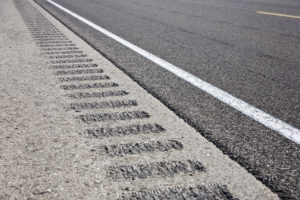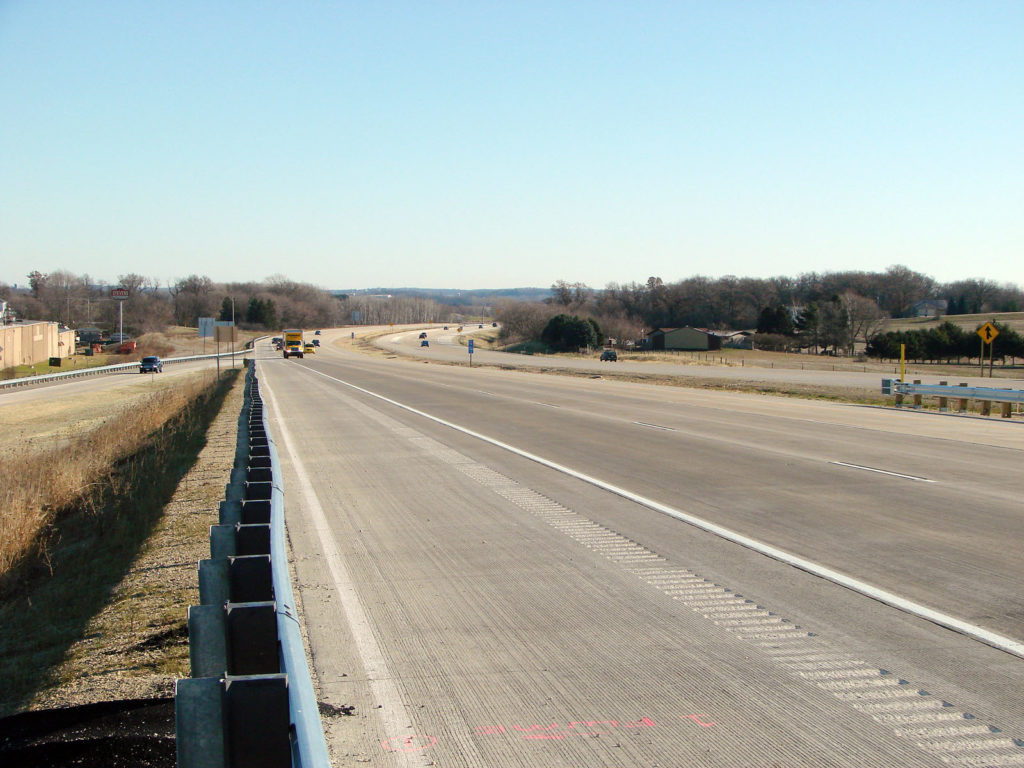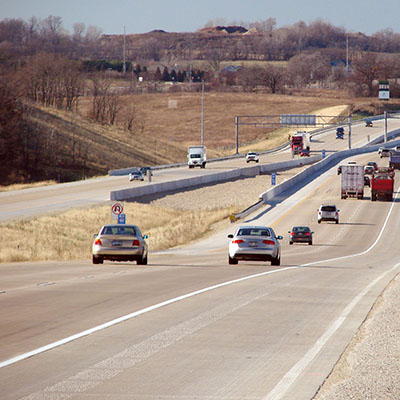Rumble Strips Help Keep Drivers Safe

Highway rumble strips are a not-so-gentle reminder of curves or other roadway changes, and safety is their primary objective.
In fact, rumble strips do a pretty good job of keeping drivers safe. According to the National Cooperative Highway Research Program (NCHRP), crashes were reduced on rural and urban two-lane roadways by 45% and 64%, respectively, after installing rumble strips along the center line. An NCHRP report also found that installing rumble strips along the roadway shoulder reduced crash frequency by 36% on rural two-lane roads and 17% on rural freeways.
We know they work, so let’s get technical and discuss the types, placements, and locations of a roadway tool that’s often taken for granted.
Two primary Types of Rumble Strips

Milled rumble strips are grooves in the pavement created by a machine using a rotary tool. Tires press into the grooves as they roll over them, producing noise and vibration. Milled rumble strips are about a half-inch deep, 5 to 7 inches wide, and 12 to 16 inches long. Changing the depth, width, and length of these grooves can create different sounds and vibrations. The general rule is that the wider and deeper the rumble strip, within reason, the more sound and vibration that will be produced.
Raised rumble strips are markers or strips applied to either new or existing roadways. These round or rectangular shaped “obstructions” are generally 2 to 12 inches wide and are adhered to the pavement. Because they are a quarter- to half-inch above existing pavement, this style of rumble strip is not commonly found in climates prone to snowfall as they would impact snow removal. Raised rumble strips are generally smaller and for that reason are considered to be less effective than milled rumble strips.
Four Common Roadway Placements
Center line rumble strips are installed along the center line of undivided two-lane roads. It’s common to see the marked center line placed over the rumble strip, referred to as a “rumble stripe.” It’s also important to consider the width of the roadway, since drivers are prone to steer away from the center line upon contact with the rumble strip. Installing center line rumble strips along a narrow lane could lead to safety issues brought on by drivers overcorrecting to the right and driving off the roadway.

Shoulder and edge line rumble strips have the primary functions of preventing drivers from leaving the roadway and drawing attention to lane position. Edge line rumble strips are placed beneath the outer lane markings and commonly are used on roads where the traffic volumes are high. Shoulder rumble strips are placed outside the outer markings on the edge of the travel lane.
Transverse rumble strips alert drivers to upcoming changes, such as a required lane change or an upcoming stop. Common transverse rumble strip placements include approaches to intersections, toll stations, and work zones.
Where They’re Used
The type of potential hazard dictates where rumble strips are placed. If a section of road has higher levels of head-on or opposite-direction sideswipe collisions, this can prompt the installation of center line rumble strips. If a section of roadway has a high incidence of vehicles running off the road, shoulder or edge line strips may be a solution. Rumble strips are installed in both rural and urban environments, but they are more frequently used along rural roadways.
Another important consideration is the noise generated by rumble strips. If a roadway runs next to a residential area, designers may provide gaps in rumble strip coverage to avoid creating noise pollution in a particular area.
For more information about rumble strips and their impact on roadway safety and design, visit the Federal Highway Administration website or contact any of our transportation engineering staff.
Comments
Micheal Foley, Marketing Communications Specialist with the Minnesota Department of Transportation, shared an interesting perspective on reducing the level of exterior sound generated by rumble strips. More info: http://www.dot.state.mn.us/research/TS/2016/201623TS.pdf

Post a comment: